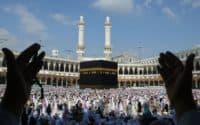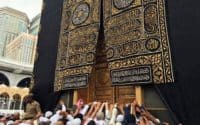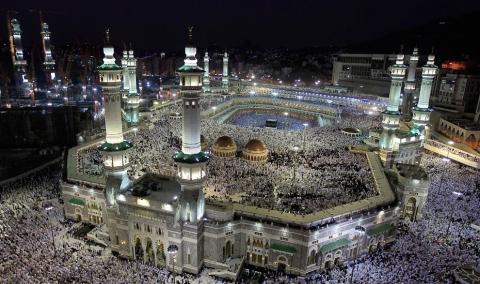
Commonly Asked Questions about Hajj and Their Answers

Hajj is one of the important five pillars of Islam. It is the Sunnah of Prophet Muhammad (PBUH) and the major rituals of it comprise of a variety of activities that are a commemoration of the earlier Prophets and religious personalities that have passed before Islam. Millions of Muslims from all over the world come to Mecca to offer Hajj every year.

Hajj is one of the most renowned and popular Muslim form of worship. Every year Muslims from across the globe plan to perform Hajj. In this regard, people search for different sources from where they can get information about Hajj and the way it is to be offered. The lines below give some general common questions that Muslims have pertaining to performance of Hajj and their respective answers.
How Can Hajj Be Defined?
Although Muslims know that Hajj is a form of worship, however, very few know about its technical definition that entails its components. Hajj can loosely be defined as a pilgrimage which Muslims pay to the House of Allah in Mecca in the state of Ihram. Moreover, during this pilgrimage the major activities which Muslims do are Wuqoof at Arafat and Tawaf at Kaba, whilst staying within the defined laws.
People on Whom Hajj Is Obligatory?
The performance of Hajj is obligatory upon every Muslims provided that he or she is financially and physically able to perform it. One needs to have sufficient funds available to make arrangements for the trip and be healthy enough to perform all the rituals. Those Muslims who fulfill these requirements, on them it is obligatory to offer Hajj at least once in their lifetime.
What Is Meant By Ihram?
Wearing of Ihram refers to wearing an unstitched seamless sheet of cloth over the body once one is at Miqat and makes the intention of performing Hajj. Once one wears Ihram one has to also stay away and refrain from all the things that are prescribed as unlawful in the state of Ihram.
What Is Meant By Tawaf?
Tawaf refers to circling around Kaba beginning from the black stone and then back to it. For Hajj, the Tawaf needs to be performed seven times and during it the Kaba should remain on the left side of the pilgrim.
What Does Sa’ee Stand For?
Sa’ee means ‘Trying’. With reference to it being a ritual of Hajj, it refers to a pilgrim marching from the Safa hill to Marwa hill. It is done in commemoration of Hazrat Hajra (AS) who searched for water while running between these two hills so that she could give water to her son Ismael (AS).
What Is Wuqoof?
The stay that the pilgrims have in Arafat when the sun of the 9th of Dul-Hijja is going down till the Dawn of 10th of Dul-Hijja is called Wuqoof.
What Things Are Unlawful Once One Is In State of Ihram?
Once a pilgrim wears Ihram and makes the intention of performing Hajj, there are certain things which become unlawful for that person. The things that are unlawful in such condition are as follows:
- Hunting or taking part in anything related to hunting of animals
- Having sexual intercourse not even its preliminaries
- Cutting of nails, or shaving of head or facial hairs
- Covering of head in any way
- Use of socks or gloves for any reason
- Wearing any kind of stitched clothes even no underwear is allowed
- Wearing any kind of perfume or deodorant
- Wearing clothes that give some kind of scent or that are washed in detergents that give aroma to the clothes
What Is The Difference Between Ihram Worn By Men And Women?
There are a few differences between the Ihram worn by men and the Ihram worn by women. The differences are:
- Women can wear sewn clothes as Ihram compared to men who have to wear unstitched clothes
- Compared to men, women can also cover their head with some cloth when in state of Ihram
- Women cannot such a veil in the state of Ihram that touches their face
- Women can also wear socks and gloves in the state of Ihram
- The things that are unlawful for a man are also unlawful for a woman in the state of Ihram
What Are The Major Elements Of Performance Of Hajj?
The performance of Hajj requires a variety of activities to be undertaken by the pilgrim in a specific order. The order and the activities that need to be performed are as follows:
- When a pilgrim reaches the point of Miqat in Macca from there it becomes obligatory upon him or her to enter into the state of Ihram whilst fulfilling all its conditions.
- Upon reaching Macca the pilgrims to visit the Grand Mosque that is around the Kaba. There they perform the optional Tawaf which is also known as Tawaf-al-Qudoom.
- On the day of 8th of Dul-Hijja the pilgrims to Mina which is about 3 miles from Mecca. They have to reach their before the Duhr Adhan and spend the whole night of 9th of Dul-Hijja there as well.
- After the Fajr prayer on the 9th of Dul Hijja the pilgrims move towards Arafat which is at a distance of about 7miles from Macca. During their journey the pilgrims also try to stay and take rest in the area of Mauqaf that is situated around the Jabl-e-Rahmat and there they remember Allah.
- On the evening of 9th of Dul-Hijja the pilgrims leave Mauqaf and move towards Muzdalifa which is a place between Mina and Arafat. There the pilgrims offer Maghrib and Isha prayer.
- The pilgrims spend the night of 10th of Dul-Hijja at Muzdalifa and for the morning prayers they move to Mina. In their moving to Mina they make sure to carry 49 pebbles which they are to cast upon the pillars of Satan.
- On the day of 10th of Dul-Hijjah the pilgrims cast stones on each of the pillars of Satan.
- Once the stones are casted, the pilgrims give sacrifice of an animal. After the sacrifice the men shave off their head while the women must cut at least an inch of their hair.
- Once the hair are cut, the pilgrims now leave the state of Ihram and move towards Macca where they once again have to perform the Tawaf and after which they have to offer two Rakat Sunnah prayer.
- After Tawaf and Sunnah prayer the pilgrims have to perform Sa’ee.
- Afterwards the pilgrims then go back to Mina on the night of 11th of Dul-Hijja.
- On 11th and 12th of Dul-Hijja, once the mid-day is passed the pilgrims again move towards the pillars of Satan and cast stones on all seven of them whilst reciting special supplication.
- The pilgrims then return to Macca on the 12th of Dul-Hijja where they offer Dhur prayer. After that those who are to leave for their country perform a farewell Tawaf of Kabah and then set out for their destinations.
Note – Besides our articles on the topic Hajj, you can download our Complete Hajj Guide Application which entails full details of all elements and activities to be performed during the Hajj.
| Conclusion:
In a nutshell, the performance of Hajj is one of the greatest worships and honors that a Muslim can have, therefore, in order to perform it in the right way it is imperative that pilgrims know about the elements of Hajj as much as possible. The lines above were an attempt to give answer to some of the general questions of pilgrims pertaining to performing of Hajj. |




